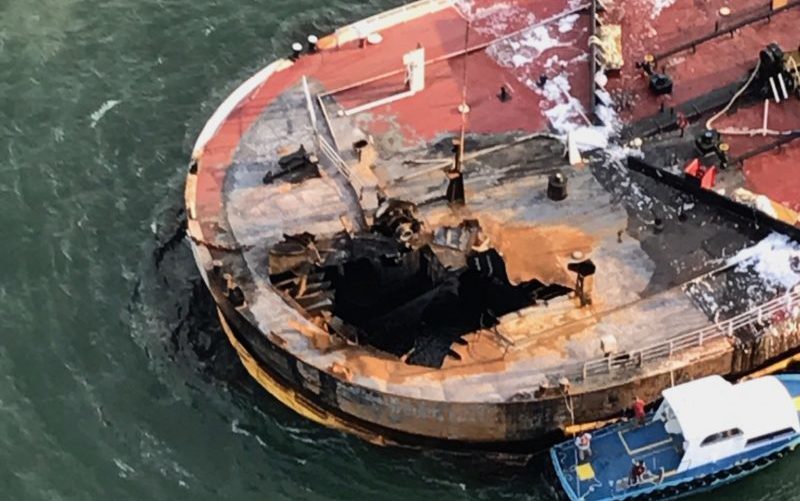A 2017 barge explosion that killed two crewmen near Port Aransas, Texas, was caused by inadequate maintenance and safety management by operator Bouchard Transportation, compounded by ineffective inspections and surveys by the Coast Guard and American Bureau of Shipping, the National Transportation Safety Board reported Thursday.
Tankermen Zachariah Jackson, 28, of Salt Lake City, and D’jour Vanterpool, 26, of Houston died Oct. 20, 2017 as they prepared to raise anchor on the ATB barge Bouchard B. No. 255. Around 4:30 a.m.
The crew on the 127’x37’x20’ tug Buster Bouchard was getting ready to move the 488’ oceangoing tank barge with its 140,000 bbl. of crude oil to Corpus Christi, Texas, when investigators believe vapors leaking into the barge forepeak were ignited, possibly by an electrical arc from exposed wires or metal-on-metal contact.
In a July 2018 hearing before NTSB and Coast Guard investigators, former tug first mate Lonnie Roberts described seeing blue flames shoot across the barge deck “like if you have a gas grill and hit the ignition” seconds before the first explosion.
The tug crew was able to disconnect from the barge and escape. After the fire was extinguished the Coast Guard found a massive hole in the deck of the barge near the bow. The NTSB report describes in detail how post-accident analysis found evidence of heavy corrosion and metal wasting.
Investigators found two horizontal cracks of 13.5” and 13.8” through the bulkhead separating the forepeak and the No. 1 port tank. Steel around the cracks was pockmarked and pitted, according to the NTSB report.
Located 15’ above the bottom of the tank, the cracks would have been below the level of crude oil when the tank was loaded four days before the explosion.
“The head pressure created by cargo levels above the cracks and other areas of through-bulkhead corrosion would have allowed the oil to seep through the openings in the bulkhead and collect inside the forepeak,” the report says. “With oil continuously entering the space over 4 days, the crude oil vapor content in the atmosphere of the forepeak would have increased.
Inside the forepeak were an anchor chain locker, lighting circuits and cables, and an electrical control box for the anchor windlass. “While raising the anchor on the morning of the accident, the wiring in the forepeak leading to the windlass’s motor was energized and could have been a source of ignition in the space where the oil vapors had collected,” the report says.
“The National Transportation Safety Board determines that the probable cause of the explosion aboard the barge B. No. 255 was the lack of effective maintenance and safety management of the barge by Bouchard Transportation, which resulted in crude oil cargo leaking through a corroded bulkhead into the forepeak void space, forming vapor, and igniting,” the report concludes. “Contributing to the accident were the ineffective inspections and surveys by the Coast Guard and the American Bureau of Shipping.”





